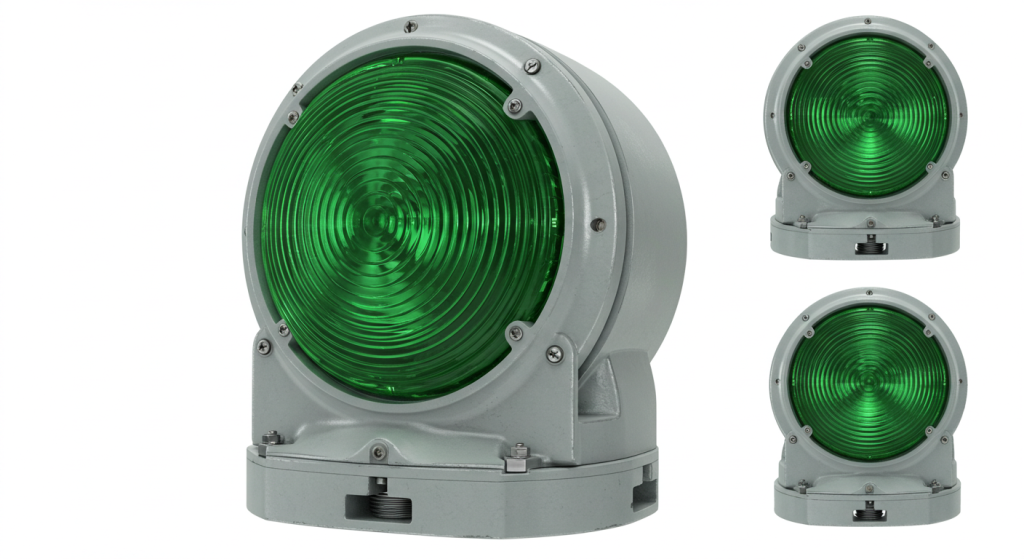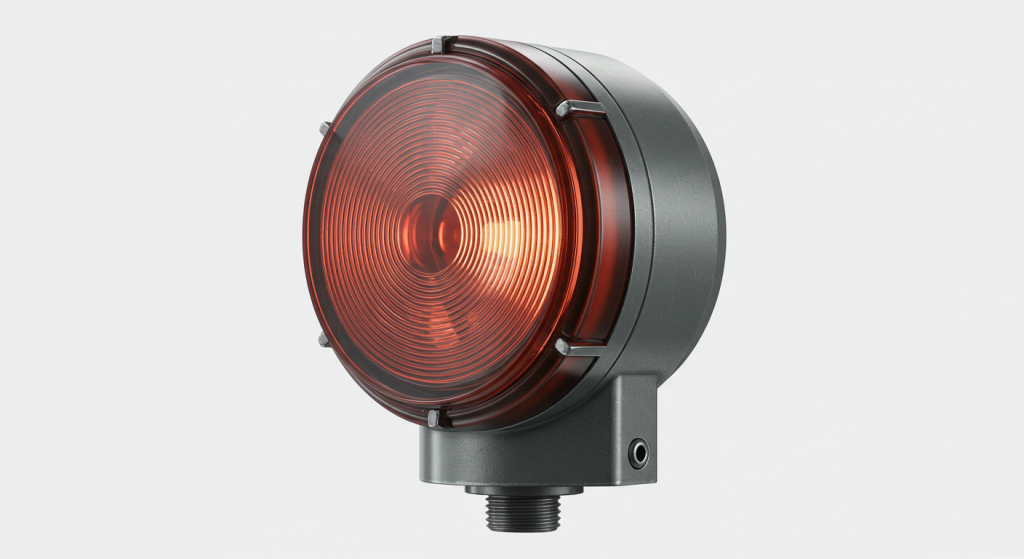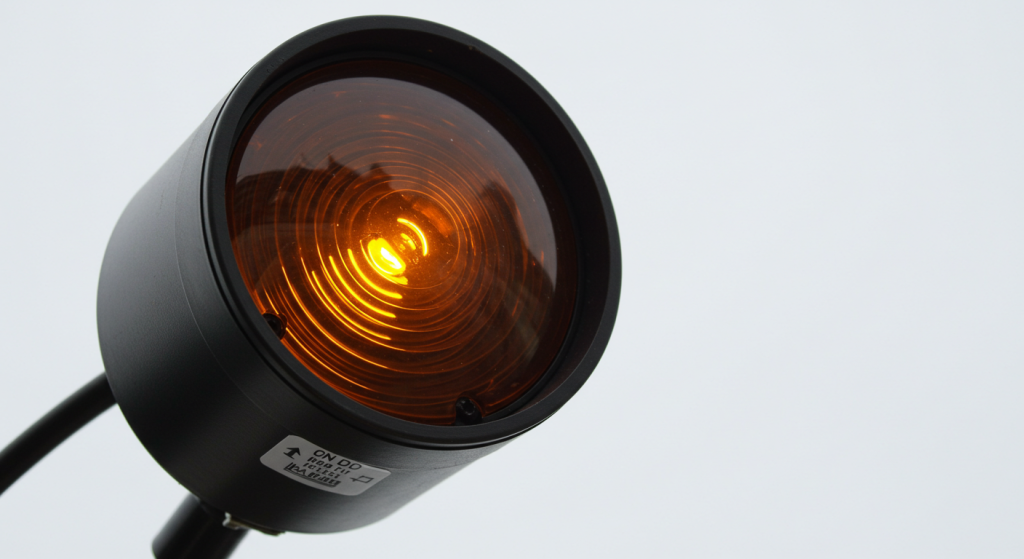Introduction:
Airport obstruction lights are an essential component of aviation safety, ensuring that aircraft can navigate through airports safely at night or during poor visibility conditions. With the increasing number of airports worldwide, the demand for reliable and high-quality obstruction lights has surged. This article aims to provide a detailed analysis of where to buy aerodrome beacon lights, including factors to consider, product details, and real-life case studies.

- Importance of aircraft warning lights
Airport obstruction lights play a crucial role in preventing mid-air collisions and ensuring the safety of aircraft and passengers. These lights are mounted on tall structures, such as control towers, radar towers, and hangars, to indicate the presence of the structure to pilots. By complying with international aviation regulations, airports can minimize the risk of accidents and enhance overall safety.
- Factors to Consider When Buying Airport Obstruction Lights
a. Compliance with Standards: Ensure that the obstruction lights you purchase comply with international aviation regulations, such as ICAO (International Civil Aviation Organization) standards. This guarantees that the lights meet the necessary safety requirements.
b. Quality and Reliability: Invest in high-quality obstruction lights from reputable manufacturers. Reliable products will provide long-term performance and reduce maintenance costs.

c. Installation and Maintenance: Consider the ease of installation and maintenance of the obstruction lights. Choose products that are user-friendly and require minimal technical expertise.
d. Cost-Effectiveness: Evaluate the cost of the obstruction lights, including initial purchase price, installation, and maintenance. Opt for cost-effective solutions that offer a good balance between quality and affordability.
- Product Details
a. Types of Airport Obstruction Lights: There are various types of obstruction lights available, including strobe lights, beacon lights, and searchlights. Each type serves a specific purpose and has unique features.
b. Power Source: Obstruction lights can be powered by AC or DC sources. Consider the power availability at your airport and choose the appropriate type of obstruction light.
c. Light Intensity: The light intensity of obstruction lights is measured in candela (cd). Ensure that the light intensity meets the minimum requirements specified by aviation regulations.
d. Color and Visibility: Obstruction lights are available in different colors, such as red, white, and green. Choose the color that best suits your airport’s requirements and enhances visibility for pilots.
- Case Studies
a. Case Study 1: A major airport in Europe replaced their outdated obstruction lights with modern, high-quality LED lights. The new lights improved visibility, reduced maintenance costs, and enhanced overall safety.
b. Case Study 2: An airport in North America upgraded their radar tower obstruction lights to comply with ICAO standards. The new lights improved navigation for pilots and minimized the risk of accidents.

- Understanding the Importance of Airport Obstruction Lights
Airport obstruction lights play a crucial role in preventing accidents caused by collisions with ground obstacles. By illuminating the surrounding area, these lights help pilots identify potential hazards and maintain safe distances from the ground.
- Types of Airport Obstruction Lights
There are several types of airport obstruction lights available in the market, each with its unique features and applications. Here are some common types:
a. Fixed Obstruction Lights: These lights are mounted on fixed structures, such as buildings, towers, and antennas. They are designed to provide continuous illumination around the structure.
b. Rotating Obstruction Lights: As the name suggests, these lights rotate to provide a 360-degree visibility. They are commonly used on tall structures, such as radio towers and wind turbines.
c. Solar-Powered Obstruction Lights: These lights utilize solar energy to power the illumination, making them an eco-friendly and cost-effective option.
- Factors to Consider When Purchasing Airport Obstruction Lights
a. Visibility Range: Ensure that the lights you choose have a visibility range that meets the requirements of your airport. The range should be sufficient to provide adequate warning to pilots.
b. Intensity: The intensity of the lights should be high enough to be visible from the air, even during adverse weather conditions.
c. Mounting Options: Check if the lights come with suitable mounting options for your specific application. This may include wall mounts, pole mounts, or roof mounts.
d. Warranty and Maintenance: Look for lights that come with a comprehensive warranty and easy maintenance procedures. This will ensure that your investment remains cost-effective in the long run.
- Case Study: A Successful Airport Obstruction Light Installation
Let’s take a look at a case study where an airport successfully installed airport obstruction lights:
Airport X, located in a densely populated area, was experiencing frequent near-misses with ground obstacles. After conducting a thorough analysis, the airport management decided to install airport obstruction lights to enhance safety.
The airport chose a reputable supplier that offered a range of obstruction lights, including fixed and rotating options. After evaluating the visibility range, intensity, and mounting options, the airport management selected the most suitable lights for their needs.
The installation process was smooth, and the lights were operational within a week. Since the installation, the airport has reported a significant decrease in near-misses and an overall improvement in safety.
- Understanding the Importance of Airport Obstruction Lights:
Airport obstruction lights are essential for the following reasons:
- Enhancing visibility during low-light conditions or darkness.
- Alerting pilots to the presence of tall structures or obstacles around the airport.
- Preventing mid-air collisions and ensuring the safety of aircraft.
- Factors to Consider When Choosing Airport Obstruction Lights:
a. Light Intensity:
The intensity of the obstruction lights should be sufficient to be visible from a distance. It is crucial to choose lights that meet the minimum requirements set by aviation authorities. For instance, the International Civil Aviation Organization (ICAO) specifies a minimum light intensity of 1,000 candela for obstruction lights.
b. Color:
The color of the obstruction lights is an important factor. Typically, red or white lights are used, depending on the specific requirements of the airport. Red lights are commonly used for tall structures, while white lights are preferred for lighting runways and taxiways.
c. Mounting Height:
The mounting height of the obstruction lights should be appropriate for the structure or obstacle they are designed to illuminate. Generally, the lights should be mounted at a height that ensures optimal visibility from all angles.
d. Power Source:
Consider the power source of the obstruction lights. Options include AC, DC, solar, or a combination of these. The choice of power source depends on the specific requirements of the airport and the availability of power infrastructure.
e. Maintenance and Reliability:
Choose obstruction lights that are easy to maintain and have a long lifespan. Regular maintenance is crucial to ensure the lights remain functional and visible at all times.
- Practical Examples and Product Details:
Let’s consider two examples of airport obstruction lights:
Example 1: Tower Obstruction Lights
- Features: These lights are designed for tall structures such as control towers and communication masts.
- Details: The lights have a high-intensity red LED, mounted at a height of 30 meters. They are powered by AC and have a lifespan of 50,000 hours.
Example 2: Runway Obstruction Lights
- Features: These lights are designed for lighting runways and taxiways.
- Details: The lights have a high-intensity white LED, mounted at a height of 10 meters. They are powered by solar energy and have a lifespan of 30,000 hours.
- Understanding the Importance of Airport Obstruction Lights:
Airport obstruction lights are essential for the following reasons:
- Enhancing visibility during low-light conditions or darkness.
- Alerting pilots to the presence of tall structures or obstacles around the airport.
- Preventing mid-air collisions and ensuring the safety of aircraft.
- Factors to Consider When Choosing Airport Obstruction Lights:
a. Light Intensity:
The intensity of the obstruction lights should be sufficient to be visible from a distance. It is crucial to choose lights that meet the minimum requirements set by aviation authorities. For instance, the International Civil Aviation Organization (ICAO) specifies a minimum light intensity of 1,000 candela for obstruction lights.
b. Color:
The color of the obstruction lights is an important factor. Typically, red or white lights are used, depending on the specific requirements of the airport. Red lights are commonly used for tall structures, while white lights are preferred for lighting runways and taxiways.
c. Mounting Height:
The mounting height of the obstruction lights should be appropriate for the structure or obstacle they are designed to illuminate. Generally, the lights should be mounted at a height that ensures optimal visibility from all angles.
d. Power Source:
Consider the power source of the obstruction lights. Options include AC, DC, solar, or a combination of these. The choice of power source depends on the specific requirements of the airport and the availability of power infrastructure.
e. Maintenance and Reliability:
Choose obstruction lights that are easy to maintain and have a long lifespan. Regular maintenance is crucial to ensure the lights remain functional and visible at all times.
- Practical Examples and Product Details:
Let’s consider two examples of airport obstruction lights:
Example 1: Tower Obstruction Lights
- Features: These lights are designed for tall structures such as control towers and communication masts.
- Details: The lights have a high-intensity red LED, mounted at a height of 30 meters. They are powered by AC and have a lifespan of 50,000 hours.
Example 2: Runway Obstruction Lights
- Features: These lights are designed for lighting runways and taxiways.
- Details: The lights have a high-intensity white LED, mounted at a height of 10 meters. They are powered by solar energy and have a lifespan of 30,000 hours.
Section 1: The Importance of Airport Obstruction Lights
Airport obstruction lights are essential for the following reasons:
- Enhanced Visibility: By illuminating the upper surfaces of airport structures, these lights ensure that pilots can easily identify potential hazards during night-time operations.
- Collision Prevention: The visibility provided by obstruction lights reduces the likelihood of mid-air collisions with aircraft.
- Regulatory Compliance: Airport operators are required to install and maintain obstruction lighting systems as per international aviation regulations.
Section 2: Types of Airport Obstruction Lights
There are several types of airport obstruction lights, each designed to cater to specific requirements:
- Fixed Obstruction Lights: These lights are mounted on fixed structures, such as towers, buildings, and masts. They emit a steady, unblinking light to indicate the presence of an obstacle.
- Rotating Obstruction Lights: As the name suggests, these lights rotate at a constant speed, providing a 360-degree visibility of the obstacle.
- Strobe Obstruction Lights: Strobe lights emit a series of rapid, intermittent flashes, making them highly visible from a distance.
Section 3: The Intricacies of Airport Obstruction Lights
The design and functionality of airport obstruction lights involve several intricate details:
- Light Intensity: The light intensity of obstruction lights must meet specific requirements to ensure visibility from a sufficient distance. This is typically measured in candela (cd).
- Color: Obstruction lights are typically red, as red is the most visible color in low-light conditions.
- Mounting Height: The height at which obstruction lights are mounted is crucial for achieving optimal visibility. This height varies depending on the type of structure and the surrounding terrain.
- Power Supply: Obstruction lights require a reliable power supply to ensure continuous operation. This can be achieved through various means, such as grid power, generators, or solar panels.
Section 4: Case Study: A Successful Airport Obstruction Lighting Project
Let’s take a look at a real-world example of a successful airport obstruction lighting project:
Project: Installation of Rotating Obstruction Lights at a Major International Airport
Objective: To enhance the visibility of a new terminal building, which posed a potential collision risk to aircraft during night-time operations.
Solution: The airport operator chose to install a series of rotating obstruction lights on the terminal building’s roof. These lights were designed to emit a bright red light at a constant rotation speed, ensuring that pilots could easily identify the structure from a distance.
Outcome: The installation of the rotating obstruction lights significantly improved the visibility of the terminal building, thereby reducing the risk of collisions and ensuring the safety of aviation operations.
I. Factors Affecting the Price of Airport Obstruction Lights
- Size and Power
The size and power of airport obstruction lights significantly impact their price. Larger lights with higher power outputs are more expensive due to the increased material and manufacturing costs. For instance, a light with a diameter of 12 inches and a power output of 150 watts would cost more than a smaller light with a lower power output. - Mounting Options
Obstruction lights can be mounted on various types of structures, such as poles, walls, or rooftops. The mounting option chosen can affect the price, as some installations may require additional hardware or modifications to the structure. For example, mounting a light on a rooftop might require a specialized bracket, which can increase the overall cost. - Quality and Durability
Higher-quality obstruction lights are more expensive due to their superior materials and construction. These lights are designed to withstand harsh weather conditions, vibrations, and other environmental factors. A light with a longer lifespan and lower maintenance requirements will be more expensive than a cheaper, less durable alternative. - Compliance with Regulations
Airport obstruction lights must comply with local and international regulations, such as ICAO (International Civil Aviation Organization) standards. Lights that meet these requirements may come with a higher price tag due to the additional engineering and testing involved.
II. Product Details of Airport Obstruction Lights
- Beam Pattern
Obstruction lights come in various beam patterns, such as omnidirectional, 360-degree, or sector-specific. The beam pattern chosen will depend on the specific application and the visibility requirements of the area. Different beam patterns can impact the price, as specialized optics and lenses may be required. - Light Source
Modern obstruction lights use various light sources, including incandescent, halogen, LED, and fluorescent bulbs. LED lights are becoming increasingly popular due to their energy efficiency, longer lifespan, and lower maintenance costs. Generally, LED lights are more expensive than traditional bulbs but offer better value in the long run. - Control Systems
Obstruction lights can be controlled manually or automatically. Automatic systems are more expensive but provide greater convenience and safety. Features such as weatherproof enclosures, wireless communication, and remote monitoring can also increase the price of an obstruction light.
III. Case Study: Comparing Prices of Airport Obstruction Lights
To illustrate the price variations, let’s compare two similar obstruction lights:
- Light A:
- Diameter: 12 inches
- Power Output: 150 watts
- Mounting: Pole-mounted
- Beam Pattern: 360-degree
- Light Source: Halogen
- Price: $500
- Light B:
- Diameter: 12 inches
- Power Output: 200 watts
- Mounting: Roof-mounted with specialized bracket
- Beam Pattern: 360-degree
- Light Source: LED
- Control System: Automatic with wireless communication
- Price: $1,200
I. Factors Influencing Airport Obstruction Lights Cost
- Height of the Structure:
The height of the structure on which the obstruction lights are installed significantly impacts the cost. Higher structures require more powerful and durable lights, leading to increased expenses. - Number of Lights Required:
The number of obstruction lights required depends on the height and visibility requirements of the structure. More lights mean higher costs. - Type of Light:
There are various types of obstruction lights available, including LED, halogen, and strobe lights. LED lights are more energy-efficient and have a longer lifespan, making them a cost-effective choice in the long run. - Installation and Maintenance:
The cost of installation and maintenance plays a vital role in the overall expenses. Complex installations and frequent maintenance can significantly increase the cost. - Regulatory Compliance:
Compliance with local and international aviation regulations is mandatory for airport obstruction lights. Meeting these regulations may require additional expenses for certifications and inspections.
II. Product Details of Airport Obstruction Lights
- Light Intensity:
The light intensity of airport obstruction lights is measured in candela (cd). Higher intensity lights ensure better visibility, especially during adverse weather conditions. - Beam Pattern:
The beam pattern of obstruction lights determines the spread and direction of the light. Different structures may require specific beam patterns to ensure optimal visibility. - Mounting Options:
Airport obstruction lights come with various mounting options, such as wall-mounted, pole-mounted, and roof-mounted. The choice of mounting option depends on the structure’s design and requirements. - Power Supply:
Obstruction lights can be powered by AC or DC sources. The choice of power supply depends on the availability and requirements of the installation site.
III. Case Study: Cost Analysis of Airport Obstruction Lights
Let’s consider a hypothetical scenario where a construction company needs to install obstruction lights on a 150-meter-high crane. The following cost analysis will provide insights into the expenses involved:
- Light Intensity: 10,000 cd
- Number of Lights: 4
- Type of Light: LED
- Installation: Wall-mounted
- Power Supply: AC
Based on the above factors, the estimated cost for the airport obstruction lights would be as follows:
- Lights: $2,000 per light
- Installation: $1,000
- Certification and Inspection: $500
- Total Cost: $9,500
Conclusion:
When purchasing airport obstruction lights, it is crucial to consider factors such as compliance with standards, quality, installation, and maintenance. By choosing the right product from a reputable manufacturer, you can ensure the safety and efficiency of your airport operations. Remember to evaluate the cost-effectiveness and choose a solution that meets your specific requirements.